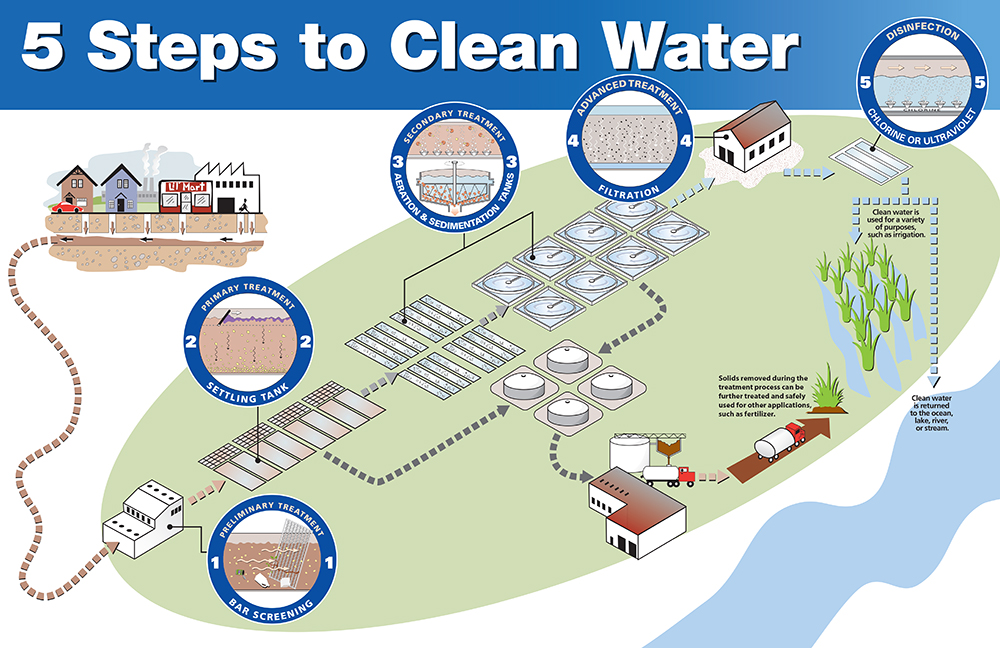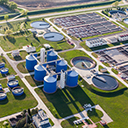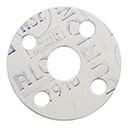Closing out 2019
Welcome to our latest newsletter, the fourth this year, all of which we hope have helped to keep you updated on our latest news and provide you with vital technical tips.
All the videos of our 4-part informative SEALutions series is now available on our website and YouTube channel.
And as promised, check out the video featuring one of our newest acquisitions: FlowWaterjet cutting table that has a 60,000 psi water pump. This is just one of several new capabilities we have added to our line-up of equipment…stay tuned for more to come!
Try solving the new quiz & check out what Gus is up to!
Merry Christmas & Happy New Year!
Sylvia Flegg, Marketing Manager
Have you ever wondered what happens to wastewater after we flush it down our drains and toilets? Here’s a Step-by-step guide on how a municipal wastewater treatment process works:
Step 1: Preliminary Treatment
Wastewater entering a treatment plant is also known as influent, and the first stop for this incoming water is preliminary treatment. This step helps remove many of the solids that could clog pipes and disable treatment plant pumps down the line. Screening removes large objects, such as sticks, rags, leaves, plastics, sanitary products, rocks, toys, or trash. The sand, grit, and gravel that make it through the screens are picked up in the next stage of pretreatment—the grit chamber. Grit chambers are large tanks designed to slow down wastewater just long enough for the grit to drop to the bottom.
Step 2: Primary Treatment
Primary treatment involves a more sophisticated settling tank, also called a sedimentation tank or clarifier. In this phase, a series of operations removes most of the solids that will float or settle, a process that can remove up to 50% of pollutants. Sedimentation removes the solids that are too light to fall out in the grit chamber. These tanks are designed to hold wastewater for several hours. During that time, floating material, such as oil and grease, can be skimmed off the top, and suspended solids can drift to the bottom of the tank, where they are collected by mechanical scrapers and pumped out of the bottom of the tank. The solids removed at this point are called primary solids, and they are usually pumped along for further treatment or solids thickening. We’ll learn more about these later. The floatable substances collected are either sent on with the primary solids for treatment, disposed of, or incinerated. This is the end of the primary stage of treatment. Most of the solids in the stream that can be removed by the purely physical processes of screening, skimming, and settling have been collected, and secondary treatment using biological processes is next in line.
Step 3: Secondary Treatment
Wastewater flowing out of primary treatment still contains solid materials, either floating on the surface, dissolved in the water, or both. The secondary treatment process is a highly controlled artificial environment where the ideal conditions are created for microscopic organisms to work as fast and efficiently as they can. Care is taken to create an environment with the appropriate temperature, oxygen level, and contact time to support rapid and complete consumption of dissolved wastes. Feeding on waste just as they would in nature, the microorganisms biologically convert the dissolved solids in the wastewater into suspended solids, which can then physically settle out. The final products are carbon dioxide, cleaner water…and more microorganisms. There are several methods available to help treatment plants control microorganisms in order to filter or settle out the resulting solids. However, one of the most common forms of secondary treatment is the activated sludge process. In this method, incoming wastewater and microorganisms are mixed in a large tank using constant aeration and agitation for a period of anywhere from a couple hours to an entire day. The microorganisms are essentially “activated” by bubbling oxygen through the mixture. Activated sludge is a continuous process, meaning a portion of the settled solids containing active microorganisms, also known as return activated sludge, is circulated back to the beginning of the process to continue working. At the end of most secondary treatment processes, 85% to 90% of the waste has been removed from the flow of water. Now, the water continues on to tertiary treatment.
Step 4: Tertiary Treatment (Advanced Treatment)
The next stage in the treatment process, tertiary treatment, is used to improve the quality of water even more. In certain cases, these systems are designed to remove specific toxic substances that may be present in the water stream, but generally the most common systems remove suspended solids and nutrients. Sometimes it is necessary to achieve a higher level of suspended solids removal than is possible through primary and secondary screening and sedimentation. This can be accomplished using filtration. In this process, wastewater passes through granular material, such as sand and coal. Usually, several types and sizes of filtering materials are mixed together in what is known as a multimedia filter. Eventually, the filter becomes clogged with material removed from the wastewater, and it is cleaned by reversing the wastewater flow in a process called backwashing. Removed solids are then recycled back into the wastewater plant for further processing. Occasionally membrane filters are used in place of granular filters to produce a very high-quality effluent. After the water makes its way through one or more tertiary processes, it is on to the last leg of its journey—the disinfection process.
Step 5: Disinfection
In many plants disinfection is the final stop in the treatment process before water is released back into the environment. Disinfection significantly reduces any remaining bacteria and viruses and helps protect the public from exposure to potentially pathogenic microorganisms. Although for years many plants relied on methods involving chlorination to do the job, alternative methods, such as ultraviolet and ozone disinfection, are becoming more widespread. In the traditional process, a chlorine solution is added to wastewater to disinfect or kill pathogens that are present in the flow. Once the water has been properly disinfected through any one of a number of methods, it has completed its trip through the wastewater treatment process. Now, the clean water can be safely sent on its way—back to the oceans, rivers, lakes, or streams in our communities or on for other uses.

Summary
Making the correct selection of gaskets for water and wastewater applications pose significant challenges. Chemicals, such as chlorine, used in the treatment process may degrade sealing materials and it is therefore important to choose materials which are able to resist attack and degradation. The effluent being processed may also contain compounds and materials that can attack and degrade sealing materials, while thick sludge and slurries can also compromise sealing performance.
To help explain further, read this article written by Chett Norton – Selecting Proper Gaskets for Water Treatment Facilities.
Durlon® 7910 Aramid with NBR Rubber Binder is a good quality general service gasket for applications where an NSF/ANSI 61 (Certification for water treatment products that are manufactured, distributed or sold in North America) certified gasket material is required. It is suitable for potable water application 23°C (73°F) to commercial hot 82°C (180°F), steam, oil, water, mild alkalis and acids, hydrocarbons and solvents; and for applications in the water treatment and reclamation, wastewater and plumbing industries.
Composition:
This compressed fibre sheet gasket material is specially developed to meet the requirement of NSF/ANSI 61 for potable water applications. It contains high strength mineral fibres bonded with nitrile (NBR) synthetic rubber.
Download the Durlon 7910 Aramid with NBR Rubber Binder Tech Sheet.
FSA releases the Mechanical Seal Life Cycle Cost Estimator Tool
This tool allows you to estimate Life-Cycle Costs for sealing solutions on a comparative basis to assist in decision-making when specifying capital projects or upgrading existing rotating equipment technology. Learn more here.
The FSA Recognizing Five Years of Technical Articles on Sealing Systems and Devices. View articles here.
Welcome to the Fluid Sealing Association KnowledgeBase!
The FSA KnowledgeBase is a source of highly reliable technical information regarding seals and sealing systems – and is FREE to all who wish to set up a complimentary account. Learn more here.
Industry Tradeshows
PowerGen, Nov 19 – 21, Ernest N. Morial Convention Center, New Orleans, LA
(IFPE) International Fluid Power Expo, March 10-14, 2020, Las Vegas Convention Center, Las Vegas, NV
ConExpo, March 10-14, 2020, Las Vegas Convention Center, Las Vegas, NV
Next issue highlights: Industry and product focus. We’ll share a new video, news and upcoming trade shows that you may want to look into. And of course, we will put those genius brains to the work again and tickle your funny bone with another adventure from our gasket guru. See you in February 2020!








